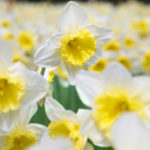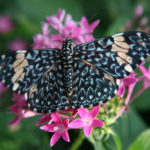Interesting facts about Carnation (cloves)
 Carnation is a flower that only seems simple. He is very unpretentious, and it’s easy to take care of him, although due to the lack of a pronounced strong aroma of cloves can still be called underestimated. Nevertheless, they are highly quoted from many florists who skillfully add them to colorful bouquets.
Carnation is a flower that only seems simple. He is very unpretentious, and it’s easy to take care of him, although due to the lack of a pronounced strong aroma of cloves can still be called underestimated. Nevertheless, they are highly quoted from many florists who skillfully add them to colorful bouquets.
Carnations are officially registered by the Royal Society of Gardeners, established in London in the early 19th century.
The Latin name of the carnation literally means “flower of Zeus”.
In the world there are about 300-350 species of carnations, but the flowers of this genus are richest in the Mediterranean.
Carnation was especially popular in the USSR, where this flower first became a symbol of the October Revolution, and then – victory in the war.
Scientists have found out that the aroma of carnations improves mood and helps people to solve internal problems.
Carnations are considered a suitable flower for a gift not only to women, but also to men.
An ancient legend says that a carnation appeared because of a flash of divine rage. Returning from the failed hunt, Artemis allegedly ripped out the eyes of the shepherd – the frustrated goddess accused him of having frightened away all the animals in the forest by playing the pipe. These eyes turned into carnations, symbolizing innocent blood spilled.
Christian tradition says that the first carnation on Earth blossomed at the time of the birth of Jesus Christ.
Carnation is a recognized symbol of love, matrimony and devotion.
The British and French carnation was considered a flower for the noble person, and the Belgians, on the contrary, went to the bouquets for commoners.
In France and Italy carnation was considered a powerful amulet – bright flowers were pinning the soldiers’ chests on the chest to protect them from injury and death.
Spanish girls passed secret messages to their beloved, pinning cloves of various shades to dresses.
Goethe considered this flower to be an embodiment of perseverance and friendship.
In the Russian lexicon the word “carnation” came from a German dialect. The Germans gave the flower a name for the similarity of its flavor with the smell of spice cloves – a completely different plant.
Broth from a carnation helped to heal from the plague of the French crusaders, besieging Tunisia. The epidemic, however, managed to carry out many lives, including the life of the French King Louis. Returning to their homeland, the knights took with them a carnation, as a memory of the deceased monarch. So the carnation has gained popularity in France.
In the 19th century in Paris, the flower girl dropped a carnation into a tub with a diluted green dye, and the petals of the flower became green. Thanks to this discovery, Paris soon filled the carnations of the most incredible shades, which became extremely popular.
Breeders managed to bring out the carnation, changing color depending on the time of day: in the morning the flower is white, in the daytime pink, and in the evening – dark-crimson.
Carnation was a symbol of the revolution not only in Russia, but also in Austria and France.
After the overthrow of the military dictatorship in Portugal, people took to the streets, clinging to their breasts carnations, and the soldiers thrust bright flowers into the barrel of their rifles.
Chinese courtiers before the audience with the emperor had to chew cloves, so that during the conversation they had a pleasant smell from their mouth.



























